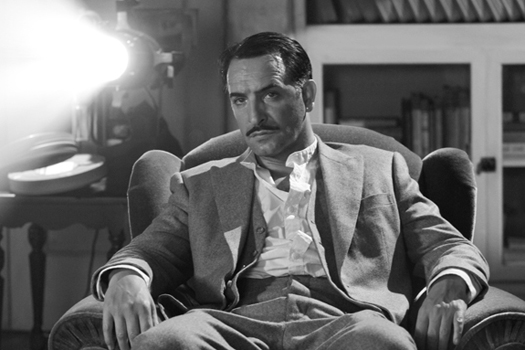We got a nice note from Kodak this week reminding us that the majority — actually, it's a landslide — of 2011 feature films honored with an Oscar nomination were shot on film. Specifically, Kodak's count shows that almost two-thirds of all narrative features (documentaries and shorts are notoriously digital categories these days) nominated for Oscars this year were shot on film. That's compelling evidence that film is alive and well among A-list filmmakers.
Of course, facts are funny things, and you could always turn that number around. Digital cinema has a very short history — Star Wars: Episode II — Attack of the Clones was the first full-on 24p HD release, and it came out less than 10 years ago — and now, more than one-third of the films receiving the industry's highest honors were shot digitally? That's either exciting or alarming, depending on how you feel about going digital. (For added irony, consider that a cash-strapped Kodak, having filed for bankruptcy protection, just had its name stripped from the theater hosting the actual Oscars ceremony.)
Kodak further notes that no Best Picture winner has been made without shooting film — Slumdog Millionaire, lauded as an Oscar showcase for digital cinema, was partly shot on Fuji film stock. (Interestingly, that was also the film that broke Kodak's long run as the maker of film stock for every Best Picture winner in Academy history).
This year, The Artist (shot on film; see our interview with cinematographer Guillaume Schiffman, AFC) is a heavy favorite but Hugo has a long shot at becoming the first all-digital Best Picture winner. (I'm assuming there are no pesky VFX elements or other bits that were shot on film for whatever reason and slipped into the cut.) The other digitally acquired Best Picture nominee, Extremely Loud & Incredibly Close (see our interview with associate editor David A. Smith), is less of a threat.
For more on Kodak's films in this year's Oscar race, see its special Oscars page.
The question of film vs. digital has renewed urgency this year because of a confluence of industry trends. Digital acquisition continues to gain ground. Distributors are becoming more vocal about their reluctance to continue servicing exhibitors with 35mm prints. The issue of vanishing repertory prints is becoming so troubling to film buffs that New York's cinephile haven, the Film Forum, has slated a series of screenings of digital prints, known as Digital Cinema Packages (DCP), with the tongue-in-cheek name "THIS IS DCP." Sony Pictures restoration guru Grover Crisp will host a digital-vs.-35mm comparison next weekend, using Dr. Strangelove as the example.
What's more, alarms have been sounded by the Motion Picture Academy itself, which recently published The Digital Dilemma 2, a report on the new challenge of maintaining long-term archives of digitally originated features, especially those created by the burgeoning numbers of indie and documentary filmmakers. You can get the report as a PDF from the Academy here, but (free) registration is required.
If you think there's enough at stake as film continues its slow fade that the story would make a pretty good movie, well, you're already covered. Side By Side, a documentary about nothing else but the ongoing digital transition, premiered in Berlin last week. It will probably be eligible for next year's Oscars — and who knows how many of those nominees will have been captured digitally?
Topics: Uncategorized
Did you enjoy this article? Sign up to receive the StudioDaily Fix eletter containing the latest stories, including news, videos, interviews, reviews and more.

Leave a Reply